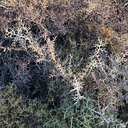Notes on local and global actions in our cities: citizen science community
The climate crisis and the UN-sustainability of cities are increasingly prominent issues in our daily lives. In our blog we explore how shifting the focus from a global perspectives to local community views can provide valuable lessons to address the global challenges. Diagram view of global problems, local issues is one way to see and relate these two seemingly different and incompatible ways of approaching things.
What is large scale urbanism perspective?
Many scientists have been considering cities at large scale from the outside making it easier to see how things are related in cities. Perspectives of scientists studying urban systems, such as Geoffrey West and Luis Bettencourt, can be crystalized as considering “cities as complex systems”.
As West formulates it himself in his book ‘Cities are one of the paradigms of Complex Systems, being made by multi-layered and highly-interconnected components , and being described generally as out-of-equilibrium systems. The interconnections between cities’ elements are inherently non-linear at every scale, starting from the interactions between their microscopic components to the mutual-influence between their macroscopic properties.’
It allowed people to study cities using principles from physics and complexity science and enabled us to see cities as networks of interactions between people, buildings, and infrastructure. Yet such a large scale perspective often is alienating to some people who are looking for more localist view point on cities allowing to act here and now, clearly seeing the contributions to cities we all live in. Such a local perspective actually can be granted through working with local communities within our cities.
Since long time (going back to the “At the Dawn of Everything”) communities were meeting and discussing together locally: everything starting from land use issues, resources reallocation and many other common questions. Recently, such community meetings in some countries became an institutionalized form of a citizen assemblies and city labs, where city stakeholders could meet citizens. Another form of such local actions became formalized as citizen science projects, when people from various backgrounds, could meet and contribute to some specific issues.
Case study of local actions in communities: noticing nature in our cities
Yet iNaturalist gives the possibility for citizens just to observe nature, in the place around them as well as identify nature from images they see. It is non intrusive approach, which aims not to change, but to access with your mind, observation. This project belongs to the class of so-called citizen science projects can be considered as type or a city activism, when people are actually acting and contributing to the city, yet are not launching actual protest.
Some of the projects with citizens locally contributing, when citizens just by sharing their observations already can contribute to addressing poly-crisis situation in our cities:
- River Lea project from the UK https://www.ucl.ac.uk/lifesciences-faculty/news/2022/aug/supporting-local-residents-clean-river-lea
- City Nature Challenges in UK, USA, France and worldwide https://arxiv.org/abs/2112.02693
